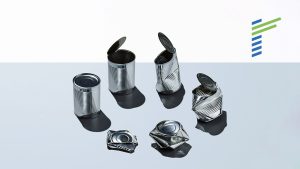At a Glance
- Organisations need to constantly optimise their structures and processes to achieve their goals in today’s competitive business landscape.
- Organisation design focuses on procedural changes to create an efficient workflow and it should not be a one-time fix as it needs to evolve as the company’s strategy changes.
- Five aspects of an organisation must be reviewed before agreeing on the re-design of an organisation.
Today’s business landscape is fiercely competitive and ruthlessly cut-throat. To remain relevant in the marketplace, organisations are constantly striving to optimise their structures and processes to achieve their business and strategic goals. This quest for organisational excellence often involves two closely related but distinct concepts: organisation design and organisational development. Although both terms are widely used in human resource circles, they represent separate approaches to organisational transformation.
Understanding organisation design and organisational development
Organisation design focuses on procedural changes. It involves defining the formal reporting relationships, roles and responsibilities to create an efficient workflow. The fundamental question that organisation design addresses is “How do I design a great organisation?”
Meanwhile, organisational development focuses on the systematic application of behavioural science to improve the effectiveness of an organisation. This may involve changes to culture, technology, or processes. The core question that organisational development seeks to answer is “How do I develop a great organisation?”
Although it is important to understand the differences between these two concepts, this article focuses only on the complexities of organisation design, exploring five key aspects that form the cornerstone of successful organisational transformations.
Why organisation design matters
Organisation design is not a one-time fix. It needs to evolve as the company’s strategy changes. A common mistake is for companies to adopt a new strategy without making the necessary changes to their organisational structure.
Effective organisation design enables you to stay aligned with your strategic objectives, as misalignment can lead to inefficiency, confusion, and poor performance. It is, therefore, necessary to review and adjust your organisation design whenever there are significant strategic changes.
A common pitfall in restructuring is to simply tweak the existing organisational structure instead of starting from scratch. Legacy structures can often be barriers to progress. They may be deeply ingrained but no longer serve the organisation. Overcoming this rigidity requires a clean break — a willingness to discard old models that don’t work and embrace new, more relevant designs.
Organisation design principles
As there is no such thing as a perfect organisation, adhering to the principles of organisation design is a critical first step in addressing fundamental issues when designing or re-designing an organisation. The aim is to design an organisation that best fits your organisation’s needs and strategic objectives.
Before embarking on any detailed work, the design of the organisation must be agreed, and this involves reviewing five aspects:
1. Business strategy
Your organisation design must support the mission (the company’s purpose and reason for existence), vision (what future success looks like and desired outcomes), goals (long-term goals that align with the vision), and objectives (specific and measurable targets for short- and medium-term milestones).
2. Current performance
Internal performance benchmarking compares current performance with historical data to identify areas of improvement or stagnation. Meanwhile, external competitive analysis looks at performance against industry benchmarks and direct competitors to assess strengths and weaknesses.
3. Stakeholder perspectives
Gather insights from external customers and internal “customers” (employees) to understand their pain points, needs and expectations. Assess the effectiveness of supplier relationships and identify opportunities for collaboration or improvement. Employees are your company’s greatest asset. It pays to assess employee engagement, morale, and satisfaction to gauge the company’s internal culture and identify potential issues.
4. Current capabilities
Identify the organisation’s current skills, knowledge and resources. Anticipate future skills requirements based on strategic goals, technological advances, and market trends.
5. Review the current organisation chart
The purpose of this exercise is to identify the current strengths and weaknesses of the structure. Managers tend to assume that the current organisational state is clear and that all employees fit into the chart. Surprisingly, most charts are inaccurate or out of date.
Spotlight: Orchestrating organisation design successfully
Effectively orchestrating organisation design can be a complex undertaking due to the inherent challenges of overcoming established structures and ingrained practices. However, Renoir consultants used their skills and expertise to help a shipping company navigate these complexities and achieve a successful organisational transformation.
Following an expansion into a fully integrated business-to-business logistics provider, the shipping company diversified into various business segments. This expansion led to a number of problems including overlapping functions, operational inefficiencies, redundant positions, limited span of control, excessive overtime, and poor productivity.
To address these issues, the company sought Renoir’s expertise. Our consultants introduced and implemented several initiatives including the establishment of standardised processes for sales, commercial planning, scheduling, support operations, and delivery across the various business units. They then seamlessly integrated these business functions while ensuring the achievement of set targets.
Based on the streamlined processes, workload analysis, and defined targets, Renoir created an effective organisational and management structure with clearly defined roles and responsibilities. This new structure enabled the company to operate efficiently, eliminate redundancies, and foster a culture of productivity.

Manufacturing: Does your supply chain need a makeover?

Effective Resource Planning for Profits and Productivity


Charting a positive growth in the mining industry
Ready for a change in your organisation?
Avoid organisation collapse during organisation design
Change is inevitable in business. As your strategy, market conditions, and technology evolve, so must your organisation design. Moving unilaterally from design A to design B without careful consideration can lead to potential disruption.
However, with careful planning and communication, business leaders can manage these challenges and even turn them into opportunities. Similarly, engaging an experienced external consultancy such as Renoir provides an invaluable external perspective, and ensures an impartial approach to guiding your organisation towards its desired future.
Organisation design or re-design can be beneficial if your organisation is facing any of the following scenarios: pre- or post-merger and acquisition (M&A) activities, onboarding new senior leadership, implementing fundamental strategic changes, venturing into new market segments or developing new products, or expanding operations into new territories or countries.
Based on our 25 years of experience, organisation design and organisational development are integral components of projects aimed at improving organisational productivity. In some cases, they may warrant a separate project. Our methodology analyses opportunities and identifies weaknesses in any organisation, enabling us to design a practical programme to implement sustainable solutions.
We need experts to redesign roles, responsibilities and structure to improve operational efficiency.










